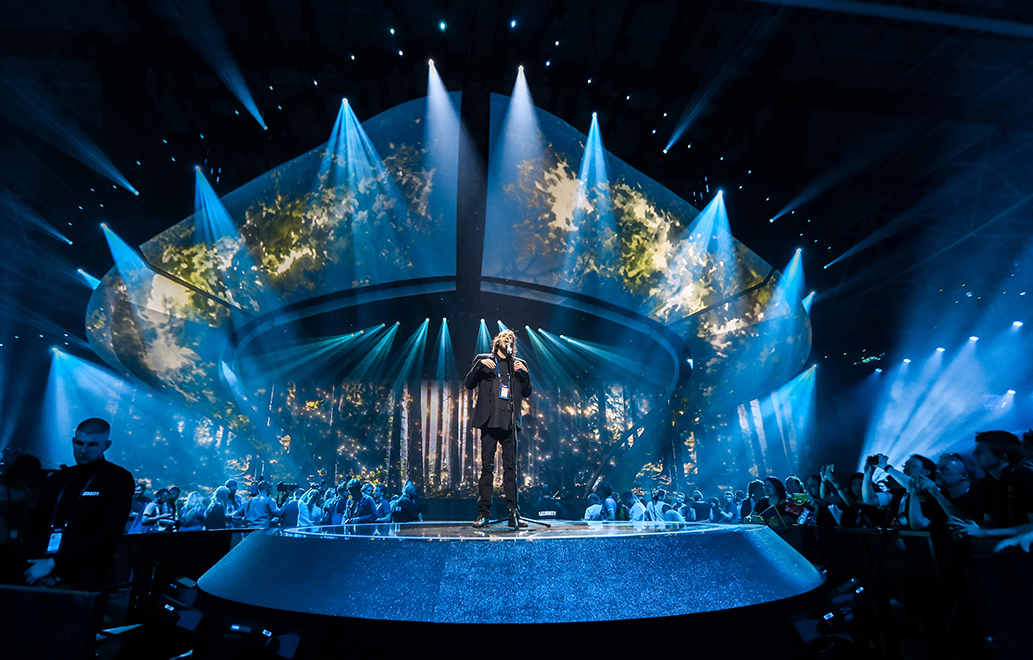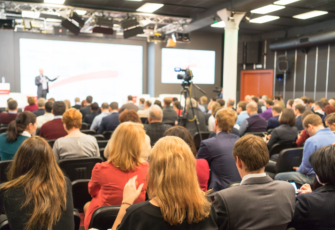
Well-designed staging transforms the event experience. A 360-degree stage can create a fully immersive setting where the audience surrounds the action. It’s a setup that boosts engagement, offers great sightlines, and fills the space with energy. This makes every moment feel like it’s happening just for you.
Maximizing Visibility
Traditional stages can limit sightlines and leave some attendees with restricted views. A 360-degree stage eliminates this issue by offering an unobstructed perspective from every angle. This setup keeps guests engaged, because there is no front or back. This allows performers or speakers to connect with the entire audience. Proper lighting and screen placement enhance visibility so that everyone remains involved.
With the stage positioned at the center, presenters must consider all angles. They need to distribute their movements evenly and address all sections of the audience rather than favoring one side. A balanced approach strengthens the connection between the speaker and attendees–maintaining high levels of engagement.
Encouraging Interaction
This format brings presenters closer to attendees and makes events feel more intimate. Performers can move freely. This breaks traditional barriers between themselves and the audience.
The design fosters a sense of inclusion, where no section of the crowd feels distant from the action. It also encourages creative staging techniques that increase participation and excitement.
Incorporating interactive elements such as audience polling, live Q&A sessions, and spontaneous engagement activities enhances the immersive experience. Attendees feel valued and included when the event structure invites direct participation. This creates a memorable and dynamic atmosphere.
Creating an Immersive Atmosphere
The circular layout transforms the way events unfold. Guests feel part of the experience rather than passive spectators. This engagement boosts enthusiasm and keeps energy levels high throughout the event. With seating wrapped around the stage, audiences stay focused, drawn into the action from every perspective.
The stage itself can be designed with dynamic elements such as rotating platforms, LED flooring, or holographic projections. These features add visual interest and excitement, draw attention, and reinforce key messaging.
Optimizing Stage Design
A 360-degree setup demands strategic planning. Performers must remain dynamic, engaging all sides equally. Lighting rigs, sound placement, and visual effects should be evenly distributed to maintain balance. Screens and projectors help reinforce visibility. They let guests follow presentations, performances, or discussions without missing key moments.
To prevent audio distortion, sound engineers must carefully place speakers to distribute sound evenly without causing echoes. Microphones should be optimized for multi-directional use to accommodate speaker movement without sacrificing clarity.
Adapting to Different Event Types
This format suits concerts, corporate events, product launches, and panel discussions.
Concerts feel more engaging when artists can interact with fans in all directions. Corporate meetings benefit from increased audience participation, while product reveals become more dramatic with central focal points. The adaptability of this layout makes it a strong choice for many occasions.
Sports events and esports tournaments have also embraced the 360-degree concept. The circular layout enhances viewing angles for all spectators. It creates an electric atmosphere that fosters audience involvement. This approach makes the experience more immersive and rewarding for attendees.
Managing Logistics and Execution
Organizing an event with a 360-degree stage requires detailed coordination. Seating arrangements should allow for smooth crowd movement.
Technical setups must account for the sound distribution and eliminate echo or audio imbalances. Entry and exit points must accommodate performers without disrupting the immersive setting. Rehearsals help fine-tune these elements for a seamless experience.
Stage transitions must also be carefully managed. Events with multiple segments may require modular stage elements that can be adjusted quickly. Coordinating lighting shifts and audio transitions helps create smooth and uninterrupted experiences that maintain audience engagement.
Create Impactful Events with Multi Image Group
At Multi Image Group (MIG), we design and produce immersive, custom stage environments that captivate and engage. From concept to execution, our 360-degree stages, advanced 3D rendering, and seamless integration of lighting and sound mean your event leaves a lasting impression.
Specializing in corporate event production, concerts, exhibits, and live experiences, MIG uses cutting-edge technology to create dynamic spaces that amplify your message and enhance every interaction. Ready to transform your next event into something extraordinary?
Contact MIG today and let us help you create an unforgettable experience.



